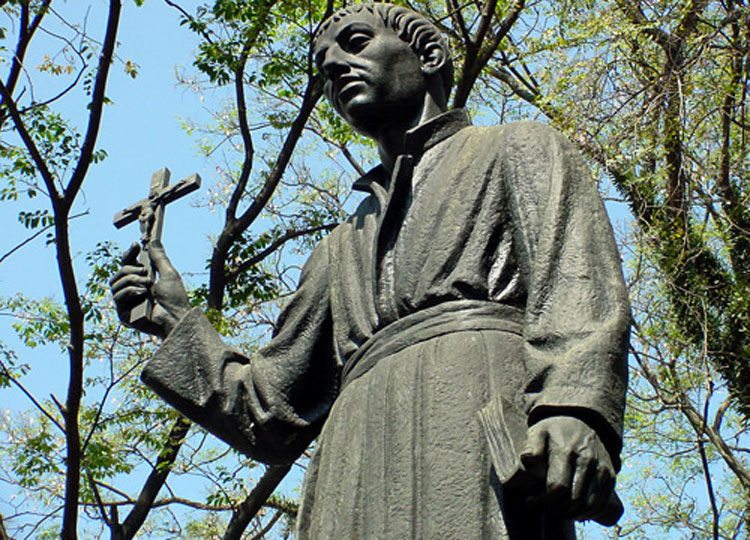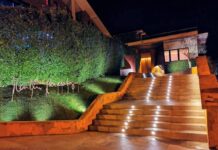It would seem that he’s not from Gipuzkoa, given what was recently published on the InfoCatólica website for the World Youth Day being held in Rio de Janeiro.
We say this because of how surprised he admitted being upon discovering the role played by Father Anchieta (whom we’ve spoken of before) in this history and evangelization of Brazil:
But we now must admit another surprise upon learning that this nation, which has the greatest number of Catholics in the world, recognizes and invokes Beatified José de Anchieta as the “Apostle of Brazil.” This 16th-century Jesuit, son of a Basque from Urrestilla and born in Tenerife, ended up being nothing less than the cofounder of the cities of São Paulo and São Sebastião do Rio de Janeiro.
How is it possible that a bishop from Gipuzkoa does not know of the origins of a Jesuit who has such historical importance and human value as Padre Anchieta? This Basque belonged to a family related with that of another man from Gipuzkoa known as Iñigo de Loyola, the founder of the Society of Jesus, who interceded at the end of the War of the Communities so that the military leaders of Gipuzkoa, who defended the legitimacy of Juana I of Castile as queen in the Revolt of the Comuneros (1520–1522) were only deported, rather than decapitated.
José de Anchieta was born in Tenerife. His father, Juan de Anchieta Celayaran, was one of those leaders from Gipuzkoa, and was sent to Tenerife, which barely thirty years prior had been conquered by the Catholic Monarchs, because of that. His father sent him to Coimbra when he was just 13 to study at the university there (interestingly, he didn’t send him to a university in Castile), and it was in Portugal where he joined the Society of Jesus (founded, lest we forget, by his father’s cousin).
It is there where he sets sail, on the service of the King of Portugal, in May 1553, along with five Jesuits, towards Brazil, where he would spend his extraordinary and fruitful life. He never stepped foot on Basque soil, and was always in the service of the Portuguese king. Despite that, in a letter titled Informação do Brasil e de suas capitanias, dated 1584, José de Anchieta defines himself as “Biscayne”.
We don’t think it’s a trivial matter that the Bishop of San Sebastian recognizes that he did not know about such an important story, nor his importance in the history, growth, and collective sentiment of this South American country.
Brazil is full of references to the Basque Jesuit; even though, in most cases, he’s labeled as from the Canaries, as if being born on recently-conquered soil because you’re father was exiled is more important than one’s own feeling of belonging.
It would have been an excellent occasion for the monsignor to stand up for this Basque Jesuit, who has been beatified and will most certainly be granted sainthood, by the Catholic Church, as one of the first of many basque missionaries who have world all over the world, and in South America in particular, for centuries, working to build a better and fairer world. But, given Murrillo’s words, we are simply flabbergasted he was unaware.
Infocatolica – 3/8/2013 – Latin America
San Sebastián de Río de Janeiro
Para los donostiarras que hemos participado de una u otra manera en la Jornada Mundial de la Juventud (JMJ) de Río, nuestra primera sorpresa ha sido comprobar que no solo compartimos patrono con los cariocas, sino también el nombre de la ciudad: «San Sebastián de Río de Janeiro». Pero aún hemos recibo otra sorpresa al saber que esta nación, que es la que tiene el mayor número de católicos del mundo, reconoce e invoca al Beato José de Anchieta como «Apóstol del Brasil». Este jesuita del siglo XVI, hijo de un vasco de Urrestilla y nacido en Tenerife, resultó ser nada menos que el cofundador de las ciudades de Sao Paolo y San Sebastián de Río de Janeiro. En el inolvidable escenario de la playa de Copacabana, el Papa Francisco propuso a José de Anchieta, aquel joven valiente y lleno de fe que llegó a Brasil con tan solo 19 años, como modelo para toda la juventud del mundo.
(Follow) (Automatic translation)
Last Updated on May 18, 2022 by About Basque Country































